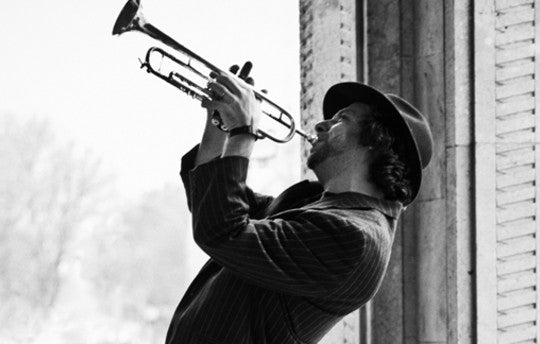Your Cart is Empty

As portrayed in Fiddler on the Roof, the itinerant klezmer musician, shlepping his way from shtetl to shtetl, is a distinctive image of pre-war Jewish life in the Ashkenazi communities of Eastern Europe. And with the mass emigrations of the twentieth century, the music became even more itinerant, resurfacing among the diaspora in America and throughout the world. It was a music that fed into American jazz in the 1920s – that melting-pot of a decade – but which went quiet in the post-war years until its revival in the 1970s and 1980s.
In pre-war Eastern Europe, Ashkenazi Jews were settled across a huge territory stretching from the Baltic to the Black Sea. Across this diverse patchwork of groups was a unifying bond of customs and, in Yiddish, a common language.
The word ‘klezmer’ comes from two Hebrew words, kley and zemer, meaning ‘instrument of song’. The name originally referred to the instruments themselves, then later to the men who played them.
The period of mass Jewish emigration to America coincided exactly with the development of the recording industry, and the 78s are snapshots of a tradition in transition, as it moved from a pre- to a post-industrial society.
The most celebrated players of this generation were Naftule Brandwein (1889–1963) and Dave Tarras (1897–1989). Brandwein, who was unable to read music, is remembered for the energy and fire of his playing and his eccentric performances. Dave Tarras, on the other hand, was a highly trained musician famed for his smooth and elegant style.
In the US, the revival of klezmer was set in motion in the mid-1970s by a group calling themselves The Klezmorim in Berkeley, California, by clarinettist Andy Statman, and Henry Sapoznik, who created an Archive of Recorded Sound at the YIVO (the Institute for Jewish Research) in New York. Another key group is the Klezmer Conservatory Band, formed in 1980 in Boston.
As the revival developed, two trends became established. A radical approach - taken by groups such as The Klezmatics, Brave Old World, the Flying Bulgar Klezmer Band, David Krakauer, the New Klezmer Trio, and Naftule’s Dream – has continued to reinvent the music, bringing in all sorts of new influences and styles.
Meantime, in Europe especially, a traditional wing is looking back to the music’s folk roots, exploring the classic repertoire. In Europe the Klezmer revival is booming and innovative klezmer groups include She'Koyokh and Klezmer Groove, based in the UK, Klezmokum and Di Goim in Holland and Aufwind in Germany.
Further east, there’s now an annual Klezmer festival in St. Petersburg and a trio of classically-trained musicians, Kroke, are based in Krakow, Poland, one of the former heartlands of Jewish music (the group is named after the Yiddish word for the city).
As the traces of Jewish music in post-war Eastern Europe are faint, the Gypsy bands that still play for weddings and other celebrations in Romania and Ukraine are about as close to the traditional klezmorim as you can get.
This living tradition, combined with the influence of a parallel movement towards period ‘authenticity’ in classical music, has inspired fresh performing styles and the use of old or reproduction instruments.
While the American klezmer revival is often nostalgic, the Israeli is mystical, bringing to the fore the music’s roots in Hassidic nigunim or religious songs. Much of the Israeli repertoire incorporates Arabic and Druze elements and several of the Israeli groups have explored these connections.
Sulam, led by Israeli-born clarinettist Moshe Berlin, is perhaps the best-known klezmer band on the current Israeli scene.
 Klezmer, the exuberant Jewish music traditionally played at weddings and other celebrations, is charted on this Rough Guide from its eastern European roots to its North American resurgence. At times soulful, at times frenetic, this selection conveys the dignity and beauty of klezmer music, and combines for the first time archival tracks alongside contemporary versions of the same tunes.
Klezmer, the exuberant Jewish music traditionally played at weddings and other celebrations, is charted on this Rough Guide from its eastern European roots to its North American resurgence. At times soulful, at times frenetic, this selection conveys the dignity and beauty of klezmer music, and combines for the first time archival tracks alongside contemporary versions of the same tunes.